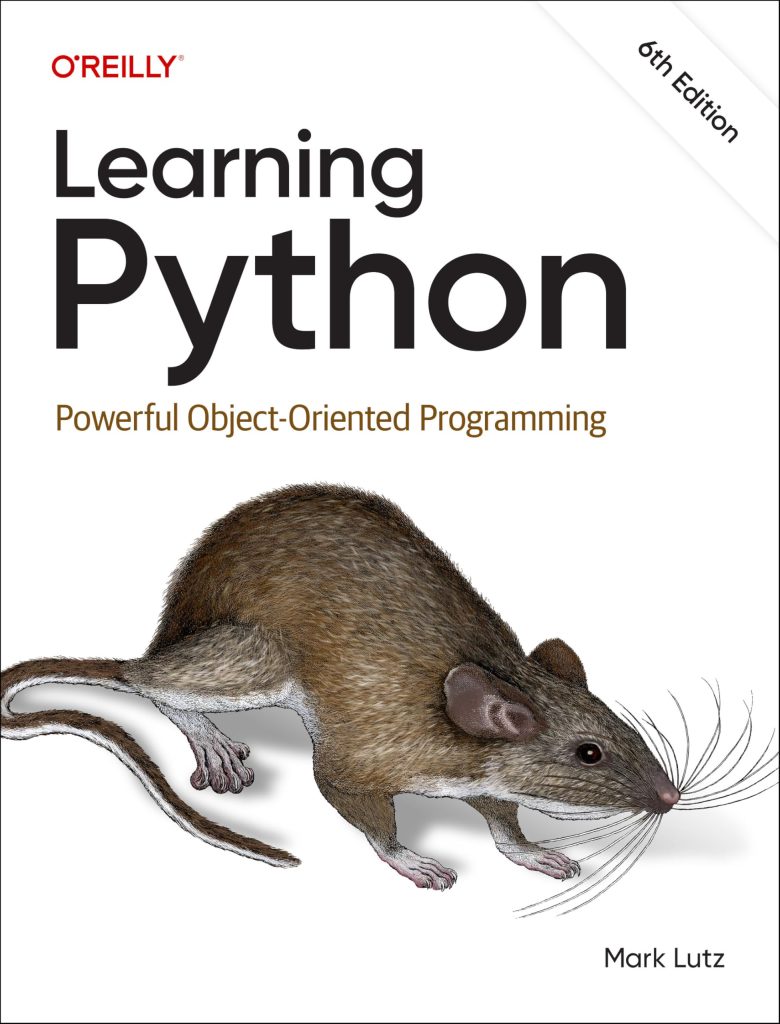
The tf.keras.Model.fit function is an important component of the TensorFlow Keras API, designed to train machine learning models on data. This function encapsulates the entire training process, including data preprocessing, computation of gradients, updating of model parameters, and tracking of metrics. It provides a high-level interface that simplifies the training process, allowing developers to focus on model architecture and data preparation.
The fit function accepts various arguments that control the training process, such as the number of epochs, batch size, validation data, and callbacks. It iterates over the training data in batches, computing the loss and gradients for each batch, and updates the model’s weights accordingly using an optimization algorithm specified during model compilation.
model.fit(x_train, y_train, epochs=10, batch_size=32, validation_data=(x_val, y_val))
In the above example, the fit function is called on a compiled Keras model instance, passing in the training data (x_train and y_train), along with various parameters. The epochs parameter specifies the number of times the entire training dataset should be iterated over, while batch_size determines the number of samples to be propagated through the network in each iteration. The validation_data argument provides a separate dataset used for evaluating the model’s performance during training.
During the training process, the fit function displays progress updates, including the current epoch, loss values, and any additional metrics specified during model compilation. This feedback helps monitor the training progress and identify potential issues, such as overfitting or poor convergence.
Preparing Data for Training
Preparing data for training is an important step in building efficient and accurate machine learning models. TensorFlow provides several utilities and data structures to facilitate data preprocessing and loading. The most common approach is to create tf.data.Dataset objects, which represent sequences of elements on which you can perform transformations and preprocessing operations.
Here’s an example of loading and preprocessing data using TensorFlow’s Dataset API:
import tensorflow as tf
# Load data from numpy arrays (or other formats)
x_train, y_train = load_data('train')
x_val, y_val = load_data('val')
# Create datasets
train_dataset = tf.data.Dataset.from_tensor_slices((x_train, y_train))
val_dataset = tf.data.Dataset.from_tensor_slices((x_val, y_val))
# Preprocess data
train_dataset = train_dataset.shuffle(buffer_size=1024).batch(32)
val_dataset = val_dataset.batch(32)
In this example, we first load the training and validation data from external sources (e.g., numpy arrays or files). Then, we create tf.data.Dataset objects from these tensors using the from_tensor_slices method. This allows us to treat the data as a sequence of (input, label) pairs.
Next, we can apply various data preprocessing operations to the datasets using transformation methods. Here, we shuffle the training data with a buffer size of 1024 samples, and batch both the training and validation datasets into batches of 32 samples. Other common transformations include normalization, augmentation, and parsing complex data formats.
TensorFlow’s Dataset API provides several advantages:
- Efficient data loading and preprocessing
- Automatic batching and prefetching for improved performance
- Support for complex data pipelines and transformations
- Integration with TensorFlow’s model training functions (e.g., model.fit)
When training a model using model.fit, you can pass the preprocessed datasets directly:
model.fit(train_dataset, epochs=10, validation_data=val_dataset)
This approach ensures efficient data loading and preprocessing during training, which will allow you to focus on model architecture and hyperparameter tuning.
Defining a Model Architecture
Defining the model architecture is an important step in building machine learning models with TensorFlow. The tf.keras.models module provides several classes and utilities for constructing neural network architectures, including sequential models, functional models, and custom model subclassing.
Sequential Models
The tf.keras.models.Sequential class is a linear stack of layers, suitable for simple architectures like feed-forward networks or convolutional neural networks. Here’s an example of defining a sequential model:
from tensorflow.keras.models import Sequential
from tensorflow.keras.layers import Dense, Dropout, Flatten
model = Sequential([
Flatten(input_shape=(28, 28)),
Dense(128, activation='relu'),
Dropout(0.2),
Dense(10, activation='softmax')
])
In this example, we create a sequential model with a flattening layer, followed by two dense layers with ReLU and softmax activations, respectively. A dropout layer is also included for regularization.
Functional Models
For more complex architectures, such as models with shared layers or multi-input/multi-output scenarios, the tf.keras.models.Model class provides a functional API for defining models. Here’s an example of a multi-input model:
from tensorflow.keras.models import Model from tensorflow.keras.layers import Input, Dense, concatenate input_1 = Input(shape=(32,)) input_2 = Input(shape=(64,)) x1 = Dense(16, activation='relu')(input_1) x2 = Dense(32, activation='relu')(input_2) concat = concatenate([x1, x2]) output = Dense(1, activation='sigmoid')(concat) model = Model(inputs=[input_1, input_2], outputs=output)
In this example, we define two input tensors and process them through separate dense layers. The outputs of these layers are then concatenated and fed into a final dense layer to produce the model’s output.
Custom Model Subclassing
For even more flexibility, TensorFlow allows you to define custom models by subclassing the tf.keras.Model class. This approach is useful for implementing complex architectures, custom layers, or advanced features like weight sharing or multi-tower models. Here’s an example of a custom model with residual connections:
from tensorflow.keras.models import Model
from tensorflow.keras.layers import Dense, Add
class ResidualBlock(Model):
def __init__(self, units, **kwargs):
super().__init__(**kwargs)
self.dense1 = Dense(units, activation='relu')
self.dense2 = Dense(units)
self.add = Add()
def call(self, inputs):
x = self.dense1(inputs)
x = self.dense2(x)
return self.add([inputs, x])
inputs = Input(shape=(64,))
x = ResidualBlock(32)(inputs)
x = ResidualBlock(32)(x)
outputs = Dense(10, activation='softmax')(x)
model = Model(inputs=inputs, outputs=outputs)
In this example, we define a custom ResidualBlock layer that implements a residual connection. We then instantiate this layer twice and chain it with other layers to construct the final model.
Regardless of the approach used, TensorFlow’s Keras API provides a flexible and simple to operate interface for defining model architectures, so that you can experiment with various network designs and customize them to your specific needs.
Compiling the Model
Before training a model, it needs to be compiled with specific settings that determine how the training process will be executed. In TensorFlow, you can compile a model using the compile() method of the tf.keras.Model class. This method configures the model for training by specifying the loss function, optimizer, and metrics to be monitored during the training process.
Here’s an example of compiling a model for a binary classification task:
from tensorflow.keras.models import Sequential
from tensorflow.keras.layers import Dense
from tensorflow.keras.optimizers import Adam
# Define the model architecture
model = Sequential([
Dense(64, activation='relu', input_shape=(10,)),
Dense(32, activation='relu'),
Dense(1, activation='sigmoid')
])
# Compile the model
model.compile(optimizer=Adam(),
loss='binary_crossentropy',
metrics=['accuracy'])
In this example, we first define a sequential model with three dense layers. We then compile the model using the compile() method, specifying the following parameters:
- The optimization algorithm used to update the model’s weights during training. In this case, we’re using the Adam optimizer.
- The loss function to be minimized during training. For binary classification tasks, we typically use the binary cross-entropy loss.
- A list of metrics to be monitored during training. Here, we’re tracking the accuracy of the model’s predictions.
TensorFlow provides various built-in loss functions and optimizers that can be used for different types of tasks, such as regression, multi-class classification, and more. You can also define custom loss functions and optimizers if needed.
Once the model is compiled, it is ready to be trained using the fit() method. During training, the specified loss function will be minimized, and the model’s weights will be updated using the chosen optimizer. The metrics will be computed and displayed during each epoch, providing insights into the model’s performance.
It’s important to note that the choice of loss function, optimizer, and metrics can significantly impact the model’s performance and convergence during training. Therefore, it is often necessary to experiment with different configurations and hyperparameters to find the optimal setup for your specific problem.
Training the Model
After preparing the data and defining the model architecture, the next step is to train the model using the compiled tf.keras.Model instance. TensorFlow provides the fit() method for this purpose, which encapsulates the entire training process.
The fit() method takes several arguments that control various aspects of the training process, such as the number of epochs, batch size, and validation data. Here’s an example:
model.fit(train_dataset,
epochs=10,
batch_size=32,
validation_data=val_dataset,
callbacks=[...],
verbose=1)
- The dataset or data generator used for training.
- The number of times the entire training dataset should be iterated over.
- The number of samples to be propagated through the network in each iteration.
- A separate dataset or data generator used for evaluating the model’s performance during training.
- A list of callback objects that can be used to monitor and modify the training process.
- Controls the verbosity of the training log output.
During the training process, the fit() method iterates over the training data in batches, computing the loss and gradients for each batch. It then updates the model’s weights using the specified optimization algorithm. The training progress is displayed in the console, showing the current epoch, loss values, and any additional metrics specified during model compilation.
TensorFlow also provides several callback functions that can be used to monitor and modify the training process. Some common callbacks include:
- Stops training when a monitored metric has stopped improving.
- Saves the model weights after each epoch if the monitored metric has improved.
- Generates TensorBoard logs for visualizing the training process.
Here’s an example of using callbacks during training:
from tensorflow.keras.callbacks import EarlyStopping, ModelCheckpoint
early_stop = EarlyStopping(monitor='val_loss', patience=5)
checkpoint = ModelCheckpoint('best_model.h5', monitor='val_loss', save_best_only=True)
model.fit(train_dataset,
epochs=100,
validation_data=val_dataset,
callbacks=[early_stop, checkpoint])
In this example, we define two callbacks: EarlyStopping to stop training if the validation loss doesn’t improve for 5 epochs, and ModelCheckpoint to save the best model weights based on the validation loss.
By using the fit() method and various callbacks, you can efficiently train your models, monitor their performance, and implement techniques like early stopping and model checkpointing to improve training results.
Evaluating Model Performance
After training a model, it’s crucial to evaluate its performance on unseen data to assess its generalization capabilities. TensorFlow provides several methods and metrics for evaluating model performance, including the evaluate() method and various metric functions.
The evaluate() method computes the loss and metric values for a given dataset. It takes the same arguments as the fit() method, but instead of training the model, it evaluates it on the provided data. Here’s an example:
loss, accuracy = model.evaluate(test_dataset)
print(f'Test loss: {loss:.4f}')
print(f'Test accuracy: {accuracy:.4f}')
In this example, we evaluate the model on the test_dataset and print the resulting loss and accuracy values. The evaluate() method returns a list of scalar values, one for each metric specified during model compilation.
In addition to the evaluate() method, TensorFlow provides various metric functions that can be used to compute specific performance metrics. These metrics can be particularly useful when dealing with complex tasks or when you need to evaluate specialized aspects of your model’s performance. Here’s an example of using the precision and recall metrics for a binary classification task:
from tensorflow.keras.metrics import Precision, Recall
model.compile(optimizer='adam',
loss='binary_crossentropy',
metrics=[Precision(), Recall()])
precision, recall = model.evaluate(test_dataset)[1:]
print(f'Precision: {precision:.4f}')
print(f'Recall: {recall:.4f}')
In this example, we compile the model with the Precision and Recall metrics, and then evaluate the model on the test_dataset. We extract the precision and recall values from the returned list and print them.
TensorFlow also provides utilities for visualizing and analyzing model performance, such as confusion matrices and classification reports. These tools can be particularly helpful for understanding the strengths and weaknesses of your model and identifying areas for improvement.
Evaluating model performance is an important step in the machine learning development process. By using the evaluation methods and metrics provided by TensorFlow, you can gain insights into your model’s capabilities, identify potential issues, and make informed decisions about further improvements or deployment.






